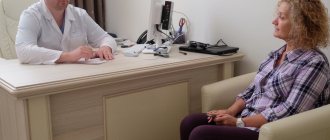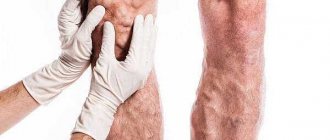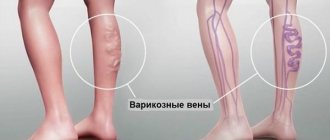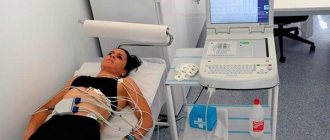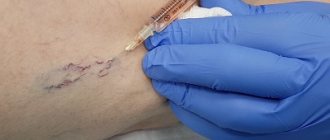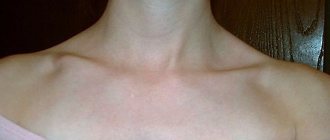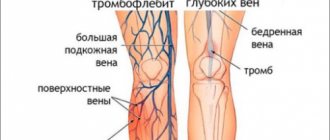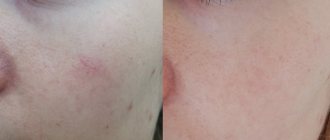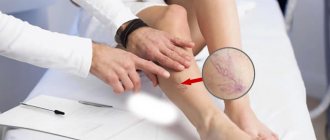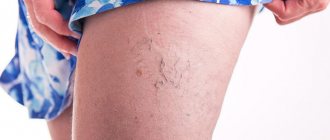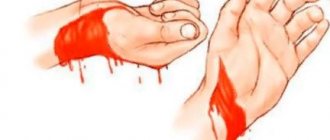Surgery to remove varicose veins on the legs (phlebectomy of the veins of the lower extremities) is one of the oldest forms of surgical treatment of varicose veins of the lower extremities. The earliest description of the procedure was written by Aulus Cornelius Celsus, a Roman medical historian. The first description of phlebectomy using hooks was published in 1545. Modern combined phlebectomy was developed around 1956 by a Swiss dermatologist named Robert Müller.
Microphlebectomy is the medical term used for the procedure of removing an enlarged superficial vein through a tiny incision in the leg. The incisions are so small that they often do not require stitches to close them. A small piece of masking tape is usually enough to cover it. The procedure also helps eliminate pain and improves the appearance of the legs. Surgery for varicose veins of the lower extremities can be used in combination with other procedures such as EVLT (endovenous laser therapy) and sclerotherapy.
Phlebologists at our center perform surgery on the legs for varicose veins, as suggested by the German professor Varadi, who developed his own instruments for performing the operation and formulated the basic postulates of modern microphlebectomy through a puncture. This method has excellent cosmetic results, is painless and does not require hospitalization. At the Innovative Vascular Center, this operation on veins for varicose veins is performed perfectly, and the price of the intervention is affordable for everyone.
Very cosmetic
In most Russian hospitals, varicose veins on the legs are removed, both through a large incision in the groin (crossectomy) and through large incisions on the legs according to Narat or Linton. The consequences of such a combined phlebectomy are not satisfactory for most patients. Our technology involves minimal intervention through skin punctures that leave virtually no scars. The dilated vein is “evaporated” with a laser without incisions. Varicose veins and nodes are eliminated with microphlebetomy and Foam-Form sclerotherapy. The use of a minimally invasive technique involves significantly less tissue trauma than “classical” combined phlebectomy; patient reviews of the postoperative period are very good.
The disease progresses: main symptoms
Very often, we mistake early manifestations of the disease for signs of leg fatigue: the symptoms of varicose veins on the legs really resemble the condition after prolonged exercise. However, you should be wary of the fact that the “fatigue” of the legs repeats again and again.
If varicose veins enter the subcompensation stage, then convoluted, convex veins and bluish venous nodules become clearly visible under the skin. Pain is added to the feeling of heaviness and fatigue in the legs. Swelling of the legs, which at an early stage went away during a night's sleep, now persists even after rest. Night cramps are becoming more common.
Seeing a doctor with such symptoms of varicose veins of the lower extremities requires more serious treatment. You may need not only sclerotherapy, but also laser treatment (EVLT) or radiofrequency ablation (RFA). For each patient, the phlebologist develops an individual comprehensive therapy program.
Under local anesthesia
The operation to remove veins for varicose veins is performed under local anesthesia, which allows you to fully numb the surgical field with a weak solution of local anesthetic - novocaine or lidocaine. The result of surgery should be the elimination of varicose veins with an excellent aesthetic result. The meaning of aesthetic phlebectomy is to remove varicose veins through punctures, but not skin incisions under local anesthesia. Only subtle scars remain, which are practically invisible after 3-6 months. Phlebologists at the Innovative Vascular Center have mastered this technique to perfection.
Without hospitalization and sick leave
When treating varicose veins in our clinic, hospitalization is not necessary. Complex cases of varicose veins are treated by combining laser coagulation and miniphlebotomy. Minimal trauma, as well as a low risk of intervention, allow this operation to be performed in a day hospital. After modern miniphlebectomy, the patient can be sent home half an hour after the intervention. In the postoperative period, you need to lead an active lifestyle, active walking is encouraged. Temporary incapacity for work usually lasts no more than 7 days, then it is possible to begin work.
Preparing for treatment
Before surgery for varicose veins in the legs, patients should stop taking aspirin or aspirin-related medications for a week before the procedure. They should not eat or drink after midnight on the day of surgery. You should not apply any moisturizers or tanning lotions on the day of your procedure. The patient should arrive at the surgery center approximately one and a half hours before the procedure. He is asked to walk around the room or corridor for about 20 minutes so that the subcutaneous nodes appear. The surgeon marks the contours of varicose conglomerates with a marker. Ultrasound scanning is performed for preoperative marking.
Symptoms at the initial stage
Varicose veins at the very beginning of the development of the disease may not appear externally. There are no tortuous or knotty veins visible on the legs, and this is what can “put the vigilance to sleep.” And leaking capillaries are perceived solely as a cosmetic defect.
However, it is not. Be aware of the following symptoms of varicose veins in the legs:
- heaviness in the legs
- swelling that increases towards the end of the day, but goes away after a night's rest
- burning in the feet, feeling of fullness, “humming” of the legs, periodic night cramps in the legs
- increased leg fatigue
- appearance of spider veins and capillaries
If you contact a phlebologist with these symptoms, without waiting for the veins to clearly protrude under the skin, treatment may be limited to the most gentle option - sclerotherapy. Attentive attention to the early symptoms of varicose veins will allow you to quickly get the effect of treatment and then only regularly attend preventive examinations.
!We recommend that expectant mothers be especially attentive to the first signs of varicose veins. Since varicose veins often develop during pregnancy, women at this time need to monitor the condition of their veins and take all necessary preventive measures. In particular, wear compression stockings recommended by your doctor.
How is the treatment carried out?
Skin punctures are made with a needle at points according to the preoperative markings. The varicose node must be carefully isolated along the vein with a special hook, and then it is removed by pulling it out through a small puncture. The video shows an operation to remove varicose veins through micropunctures on the legs. Sutures are not required if the doctor uses minimal incisions (1-3 mm) and good postoperative compression. This eliminates the consequences in the form of noticeable scars and seals in the incision area. Experienced surgeons remove extensive venous networks in both legs in one session lasting from 60 to 120 minutes. Additional sclerotherapy for residual varix and telangiectasia allows you to remove small vessels after phlebectomy. With laser phlebectomy, small punctures are made, and the removal of the vein in small sections minimizes the appearance of blood clots and promotes the best cosmetic effect. This method requires special training of the surgeon. After all extended varicose segments have been removed, a compression bandage must be applied.
Possible complications of phlebectomy
Most minor complications are not dangerous and resolve spontaneously. Varicose veins only recur if the source of venous reflux is not removed using endovenous thermal ablation techniques. Laser phlebectomy involves a combination of methods leading to complete recovery.
What can happen after phlebectomy of the great saphenous vein?
- Bleeding, hematoma formation on the thigh (the formation of bruises depends on the correct selection of compression garments),
- Skin pigmentation along the treated venous trunk.
- Other complications, such as accidental nerve damage with sensory impairment or infection, are rare.
- Sometimes skin necrosis may occur.
- Keloids and hypertrophic scars usually do not occur due to the minimal size of the incisions.
- Deep venous thrombosis is observed in isolated cases, since compression stockings are effective methods of prevention.
Varicose veins of the lower extremities: etiology and clinical manifestations of the disease
Varicose veins are a serious pathological disease of a chronic nature, as a result of which venous vessels lose their elasticity and normal throughput, blood microcirculation is disrupted, swelling and trophic changes develop, associated with regular stagnation of blood in the veins. Due to a lack of elastin and collagen, the vessel gradually expands and loses its functionality.
The etiology of varicose veins of the lower extremities is controversial. Considering that varicose veins often occur in close relatives in the same family, we can talk about a hereditary factor. The genetic characteristics of the valve apparatus and weakening of the vascular wall can cause primary varicose veins. Chronic venous insufficiency is the result of prolonged neglect of the symptoms of the disease. Less commonly, varicose veins are caused by other reasons beyond the patient’s control.
The primary clinical manifestations of varicose veins may be limited only to swelling and heaviness in the legs at the end of the working day. In the absence of proper treatment, the disease can progress rapidly, which will be expressed in pain, hyperesthesia, and visible manifestations of dilated veins. In the last stages of varicose veins, severe induration, hyperpigmentation, and the formation of eczema and trophic ulcers can be observed.
Risk factors and causes of disease development
Varicose veins in the legs are a systemic disease, so its nature consists of many risk factors, the main ones of which can be considered:
- Poor hereditary history, aggravated by varicose veins of the lower extremities in members of the same family;
- Hormonal imbalance associated with endocrine diseases or pregnancy;
- Dysfunction in the functioning of the venous valves, which prevents normal circulation and contributes to blood stagnation and increased venous pressure in the legs;
- A sedentary lifestyle and little stress on the legs leads to venous stagnation;
- Other pathological diseases associated with changes in blood circulation in the lower extremities: muscular dystrophy, diabetes mellitus, stroke and other trophic processes;
- Obesity, bad habits, intense physical activity and age-related changes in the body.
The risk group mainly includes women, because... During their life, their body systematically undergoes serious changes associated with pregnancy, weight loss and gain, and wearing uncomfortable high-heeled shoes. Professional athletes and representatives of “sedentary” or “standing” professions are also susceptible to varicose veins: office workers, hairdressers, programmers, salespeople, etc.
Prevention of varicose veins
If you observe the first signs of varicose veins of the lower extremities, feel severe fatigue, pain in the legs and swelling, you need to urgently take measures to restore the health of the venous vessels in order to prevent the development of the disease. For people who are at risk, preventive measures are the only chance to avoid serious consequences.
The first thing to do is to regularly visit a phlebologist and monitor the dynamics of the development of varicose veins in the legs. Following simple and understandable advice from a specialist will help slow down the process and avoid complications of varicose veins, which require serious treatment. What is included in the list of preventive measures?
- Move more - moderate exercise, walking or swimming helps thin the blood and normalize circulation in the venous vessel;
- Proper nutrition and maintaining water balance - excess weight is an additional burden on the blood vessels of the legs;
- You should not wear tight, tight clothes and high-heeled shoes - any compression of the venous vessels and immobility of the foot are provoking factors for the development of varicose veins;
- Therapeutic gymnastics - your doctor will tell you a list of exercises;
- A healthy lifestyle will help keep your veins and legs healthy.
It is worth understanding that in case of chronic venous insufficiency it is already necessary to take more serious measures related to drug treatment or surgery.
Observation after treatment
Regular classic phlebectomy is rarely needed by patients, as it usually requires an overnight stay in the hospital and 2 to 8 weeks at home. After vein removal in the lower extremities in our center, the patient is allowed to exercise, but should not drive a car for at least a day, since distal motor function may be impaired due to prolonged anesthesia, especially after anesthesia in the popliteal region. The patient is advised to walk for about 10-15 minutes before leaving the clinic.
In the future, you will need to take diosmin medications (detralex); it is not recommended to stand in one place for a long time for 2 weeks. This helps minimize the risk of blood clots forming in the deep veins of the leg. A compression bandage prevents post-operative bleeding and reduces the likelihood of pain, bruising and other complications. The bandages are removed 3-7 days after surgery, but the compression stocking should be worn for an additional 2-4 weeks to minimize bruising and swelling. The wearing time depends on the size of the veins removed and the degree of reflux treatment. Stockings can be removed when taking a shower.
Additional sclerotherapy should be postponed for several weeks and done after the postoperative swelling has disappeared. Many spider veins can spontaneously regress and also disappear spontaneously after the varicose veins are removed through outpatient phlebectomy. Patients should avoid early sun exposure because hyperpigmentation may appear at the puncture or incision site.
The patient is advised to monitor for redness, swelling, suppuration, fever and other signs of infection. If these signs appear, you should immediately consult a doctor.
Symptoms of varicose veins at a late stage
If the disease has reached the stage of decompensation, then the symptoms appear so clearly that seeing a doctor becomes vital. At a late stage, varicose veins are dangerous for the development of dangerous complications, so treatment should be started immediately.
If varicose veins are in the stage of decompensation, then in addition to the existing symptoms: pain and heaviness in the legs, swelling, cramps, itching, a change in skin pigmentation is added, it acquires a bluish or brown tint. Stagnation of blood in the veins leads to disruption of tissue nutrition, resulting in trophic disorders. Ulcers, weeping spots, poorly healing or non-healing wounds appear on the skin.
If such changes begin, then varicose veins can be treated only after the wounds on the skin have been healed. Thus, the total duration of treatment increases markedly. As for varicose veins, they may require surgical removal.
Hippocrates said: “Both success and failure in treating a disease must be attributed to both the doctor and the patient.” If you are attentive to your health, then do not miss the first symptoms of varicose veins, consult a doctor in time and you will be able to maintain the health and beauty of your legs for a long time.
